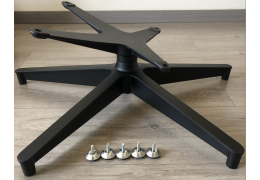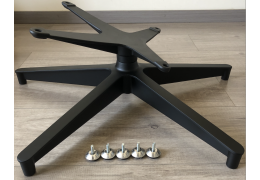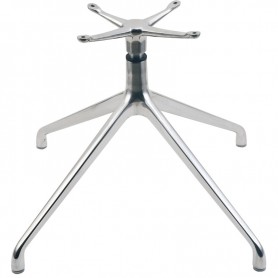Choosing the right replacement parts for your Eames Lounge Chair requires more than just finding a compatible fit....
Key Features to Consider When Selecting office chair Components
When selecting office chair components, several key features can significantly impact user experience, comfort, and overall satisfaction. Understanding these features will help you make informed decisions when sourcing from suppliers, ensuring that the final product meets your quality standards and customer expectations.
Durability
What materials ensure longevity?
Durability is a fundamental characteristic that should not be overlooked when selecting office chair components. High-quality materials contribute to the lifespan of the chair, ultimately affecting the cost-effectiveness of your purchase. Look for the following indicators of durability:
Frame Material: Metal frames, particularly those made from steel or aluminum, provide robust support and are less likely to break or warp compared to plastic. For example, a chair with a steel frame will typically have a longer lifespan and better stability.
Upholstery Quality: The fabric or leather covering the chair should be chosen carefully. Consider materials that are tear-resistant and easy to clean, such as high-denier polyester or durable leather. Products from manufacturers like Genuine Leather offer a range of durable upholstery options.
Comfort
How do cushioning and design impact user comfort?
Comfort is paramount for any office chair, as it directly influences productivity and user satisfaction. Key aspects to consider include:
Cushioning: The seat should feature adequate padding to support long hours of sitting. Memory foam is often a preferred choice due to its ability to conform to the body, alleviating pressure points. For more insights on the benefits of memory foam, check out Sleep Foundation.
Design Features: An ergonomic design that allows for proper alignment of the spine is essential. Look for chairs that offer adjustable seat height, backrest angle, and lumbar support to cater to various user needs.
Ergonomics
What ergonomic features should suppliers provide for optimal health benefits?
Ergonomics plays a critical role in the design of office chairs. A well-designed chair can promote better posture and reduce the risk of musculoskeletal issues. Here are some key ergonomic features to consider:
Adjustable Lumbar Support: This feature allows users to modify the support based on their back's natural curvature. Research from The American Chiropractic Association emphasizes the importance of lumbar support in maintaining spinal health.
Tilt and Recline Functions: A chair that offers tilt and recline options can help users shift their weight throughout the day, reducing fatigue. Look for chairs with adjustable tension controls that allow for a customizable recline angle.
Armrest Adjustability: Adjustable armrests help to reduce shoulder strain by allowing users to position their arms comfortably while typing or using a mouse. Ensure that the armrests can be moved up or down, and in some cases, rotated.
Conclusion
When selecting office chair components, prioritizing durability, comfort, and ergonomic design will significantly enhance user satisfaction and productivity. By sourcing from reputable suppliers who offer high-quality materials and thoughtful design features, you can ensure that the final product meets the needs of your customers.















Latest comments